
Accipiters
There are three species of Accipiters (true hawks) in North America.
The smallest is the Sharp-shinned Hawk, the medium sized is the Cooper's Hawk and the largest is the Northern Goshawk. (There are 47 species of Accipiter world-wide).
Accipiters are considered true hawks, characterized by long tails and short rounded wings, which have evolved for catching prey in forested areas.
Click on thumbnail for larger photo and more specific information. Please remember the terms of use.

|

|

|
Cooper's Hawk (adult by eye color & plumage) | Sharp-shinned Hawk (juvenile by eye color & plumage) | Sharp-shinned Hawk (juvenile by eye color & plumage, male by size)
Click on photo |

|
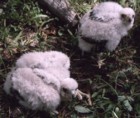
|
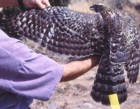
|
| Northern Goshawk (adult by eye color & plumage) | Northern Goshawk Chicks (20-22 days old) | Northern Goshawk (imm by eye color & plumage) |
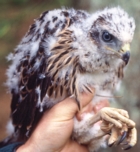
|
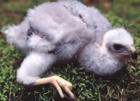
|
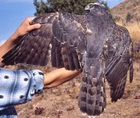
|
|
European Goshawk chick Click on photo |
European Goshawk chick Click on photo |
Northern Goshawk (2nd Year - Notice Juvenile & Adult feathers) |
Accipiter Characteristics
The short rounded wings allow for fast acceleration and aid in dodging around and going between trees and branches. The long tail aids in braking and making fast turns.
Though Accipiters are adapted for hunting and nesting in forested areas, they can also be found nesting in riparian areas or even isolated clumps of trees. They can also be seen hunting in open areas within several miles of their nests.
"Sharpies", "Coops" and Goshawks are most commonly seen during migration (esp. Fall Migration), where they can be seen flying with their typical flap-flap-flap-glide pattern.
-
North American Accipiters prey on a variety of birds and mammals.
-
Sharp-shinned Hawks prey almost exclusively on small birds.
-
Cooper's Hawks prey on small mammals, lizards and medium sized birds.
-
Northern Goshawks feed on small & medium sized mammals and medium to large sized birds.
Accipiter species are size dimorphic, meaning that one sex is larger than the other. They are also referred to as reversed size dimorphic because the females are larger than the males (as with most raptor species). See individual species for more specific information.
The reversed size dimorphism has long been known by falconers. The old falconry term for a male is tiercel, which means "a third less". Check back from time to time...We will be adding more information in the future.
|
Our Favorite Bird Watching Binoculars, Squirrel-Proof Feeder & Hummingbird Feeder Read Our Reviews: |
||
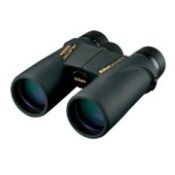
Nikon Monarch M5
Best mid-priced bird watching binoculars. Waterproof, shockproof, multi-coated ED-Glass. |
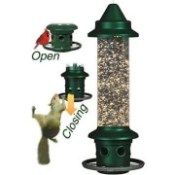
|
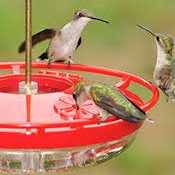
Best Hummingbird Feeder
Drip-Free, Ant-moat, Durable, Easy to Fill and Clean. |
| Click Images or Links To View More Info | ||